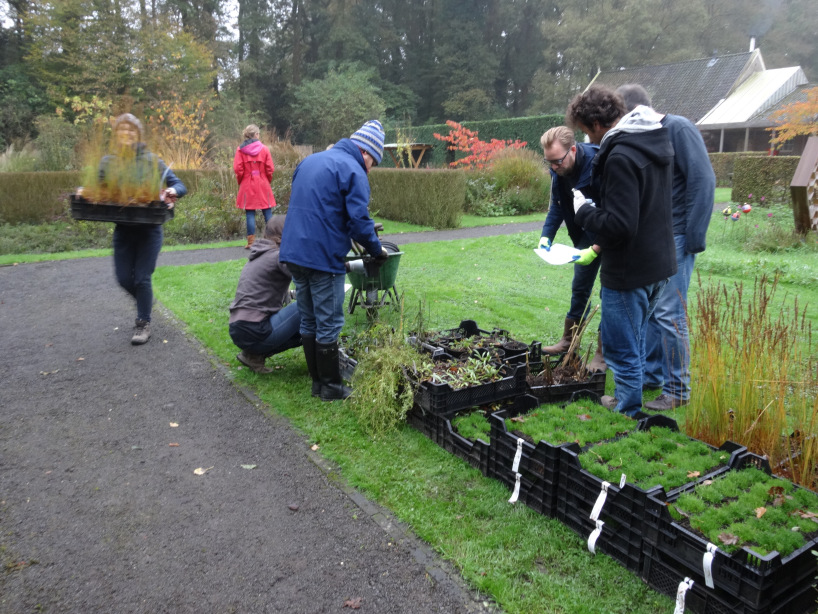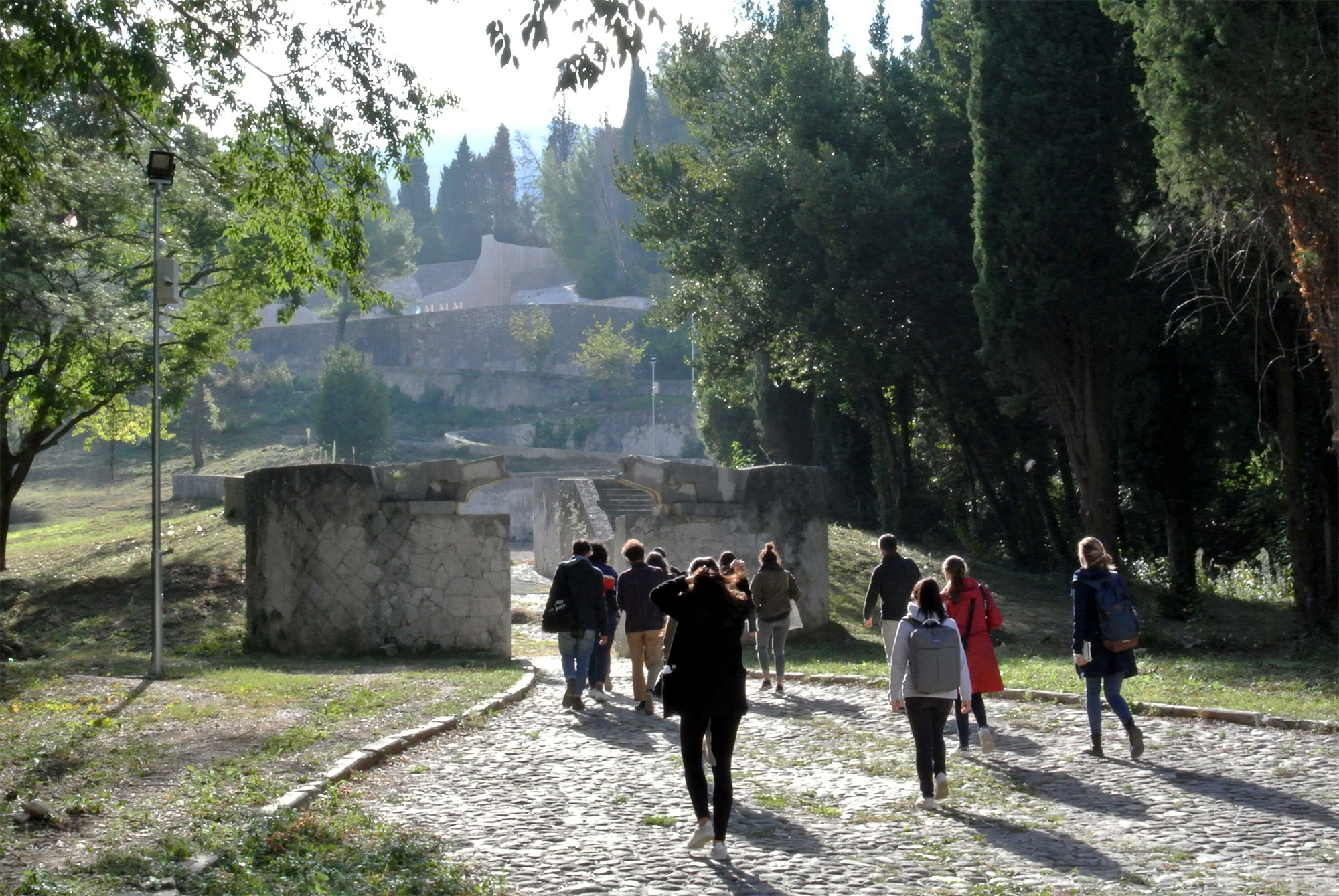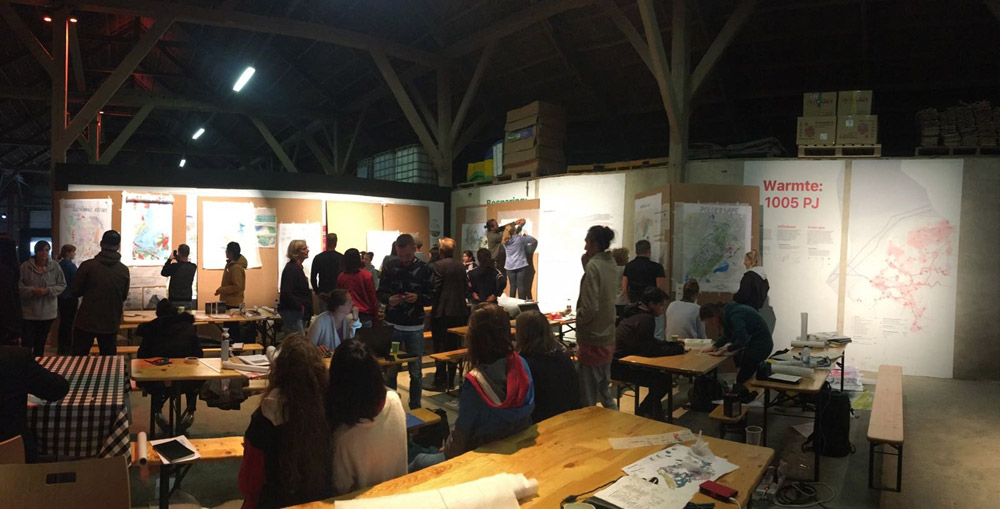
The Institute of Place Making finds out and makes visible what the notion of place is about and how it evolves. It will do this by mapping, categorising and analysing feedback of visitors and inhabitants on their experience with Terschellings’ landscape and places. The results will be returned through a website with a map of the island indicating the values visitors and inhabitants endow to a variety of places they know on the island. An interactive classification and exhibition of the results will take place at the Institutes’ laboratory during Oerol at ‘Duinmeertje Hee’.
Collecting
People will be all around the island during the festival. Therefore the staff of the Institute will go out of the office to meet them in the field, and hand out test tubes with the request to put the ‘essence of Terschelling’ in the test tube and return it to the Institute. The test tube is used as a symbol and medium to activate thinking about place. A small label is attached to the test tube, with instructions and space to fill in personal information: age, gender and place of residence, a space to fill in data about the place: a small map to mark the location, what the weather was like and the time of the day, and a small space to note the experience in a few keywords, or draw something. This information will help us to categorize the places. In addition to this, conversations with visitors on their place will be collected as audio and video fragments. The visitors may keep the test tube a couple of days with them to find and experience their place before returning it to us.
Processing
One can visit the Institute at ‘Duinmeertje Hee’ to have the results, test tube and completed label, processed. Here, the visitor is brought into a pseudo-scientific world of staff in white lab coats who receive the visitor and extract the data with them in a couple of steps: making a photograph of the test tube, measuring and weighing the contents, pinning the place as accurate as possible on a large wall map, asking some additional questions to categorize the data like wet or dry, hot or cold, dead or alive, and then bringing the data form the label into a digital interactive map on the website.
The visitor is then asked to go into the forest and put their test tube in one of the white cabinets in the ‘open air laboratory’. These cabinets have poetic names like ‘the cabinet of overwhelming nature’, ‘the cabinet of immeasurable colours’ or ‘the cabinet of eternal elements’. In every cabinet, a more detailed classification is made within the theme of it. After some days a collection of experiences builds up in the cabinets in the form of a cabinet of curiosities that other visitors can watch and study. The cabinets will be installed in the forest in accordance with the shape of the old dunes’ topography the raster of trees and the patterns on the forest floor, forming a group of ‘objets trouvés’.
Analysing
The results of the project will be heavily coloured by the fact that there is a festival taking place, but the principle could be repeated on a different moment or at a different location. It certainly will give us an overview of places and landscapes that people on Terschelling appreciate most. For a more elaborate investigation the fairly subjective data of the visitors will be supplemented with more objective characteristics derived from GIS-data like landscape type, field of view, percentages green, open sky, water, weather, etc. A comparison could then be made between perception of a person and what the landscape actually looks like. Each day of Oerol the results will be analysed and some striking outcome will be the motive for a daily manifestation in the afternoon, elaborating on that specific result.

But the investigation could also be placed in a broader context .The next step could comprise of making the results operable for landscape architectonic design. The landscape in the Netherlands is changing rapidly, and will continue to change even more in the future. The ‘old’ is replaced for the ‘new’, usually to the chagrin of those familiar with these places. How can we use their views to guide transition in a more sensible way? The Institute of Place Making also wants to find an answer to that question.
Curious what the project looks like? Visit us at Oerol, June 14 – 23, 2013, at ‘Duinmeertje Hee’
Website of the Institute of Place Making (IOPM)
Michiel Pouderoijen and Denise Piccinini, assignment coordinators and tutors of Landscape Architecture ON site, being part of Oerol 2013 (Elective MSc2 – Chair Landscape Architecture at the TU Delft) Students: Kaegh Allen, Ilse van den Berg, Erik van der Gaag, Charlotte Grace, Bart de Hartog, Rogier Hendriks, Doris van Hooijdonk, Marleen Klompenhouwer, Emiel Meijerink, Eva Nicolai, Pépé Niemeijer, Sarah Roberts




